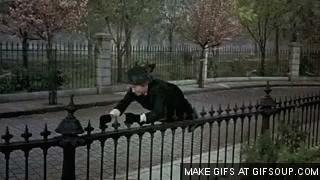I am still trying to figure out the mass psychology of this.
Part of me thinks people simply do not understand what are the very basics to the economists, engineers, and scientists involved in these questions. Option A and Option B each have their strengths and weaknesses, and coming up with an optimal route requires a lot of thought, research, judgmental calls, and ultimately, a lot of compromise.
That process is exceedingly boring and does not have a clean narrative. It also lacks an "ending." It does not have a three act structure, like most of our entertainment products, and it does not have a clear winner and loser like watching a ball game. Unable to deal with that reality, people either (1.) filter it like that or (2.) have it filtered like that by the media providing them the relevant content, who need to do that for their own commercial interests to draw eyeballs.
When one consumes media, unless you are paying for it, you are the product, not the customer. It is no small wonder that news has become more like entertainment over time as content has become free, with simpler plots and more obvious "sides" for you to choose.
I also wonder if people kind of sense those hard decisions are there to make about many important issues and, instead of embracing the challenge, they recoil at it. People do not like making hard decisions that remind them of life's limitations, especially regarding issues they know deep down that they barely understand. We as as country are going to have to make some very hard choices about the next era of our foreign policy, energy industry, education, fiscal policy, retirement and income security, and healthcare in the next decade or two.
Very few of those choices will involve more free stuff without significant amounts of pain, even if that is what is being sold us right now. I am not buying.
Therefore, as a psychological self-defense mechanism against the complexity of the issues or the trade-offs involved, they just simply everything down to good-and-bad and use that as a crutch. It is not ignorance, but more willful ignorance to avoid the depth of the problem. You always delay a hard choice if you can, to maximize your utility in the short-term before making it and for the possibility that something more attractive for you might open up if you wait.
Amazing how the two parties have basically collapsed around the same thing -- a series of unrealistic and frankly fantastical promises, each from the perfect avatar of their collective id and cultural identity. One side offers a rich game show host from Queens, and the other side offers a broke bartender from Brooklyn. Not seeing much Eisenhower or Truman.


